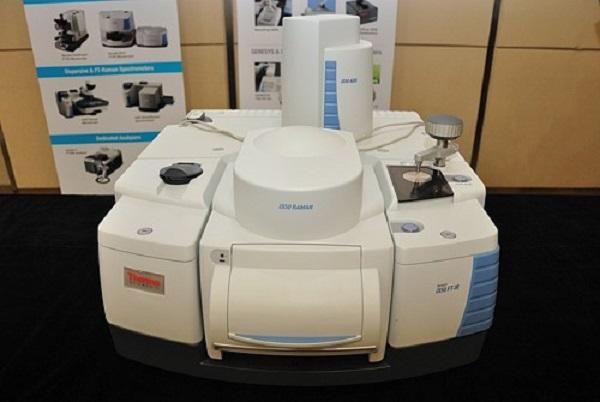
FT-IR (Thermo Scientific Nicolet iS 50)
-
Dual light source
-
Three detectors for the main sample compartment
-
High-resolution standard
-
All gold optics standard
-
Equipped with environmental chamber for DRIFTS to obtain in-situ IR signal
-
Equipped with gas cell in capable of simultaneously quantitatively analyzing dozens of gaseous compounds
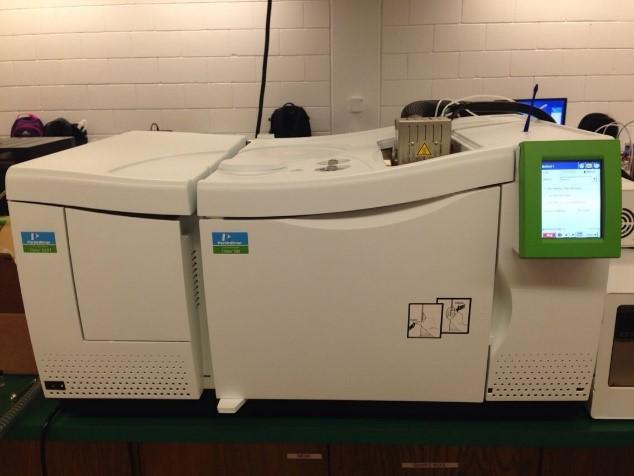
GC/MS (PerkinElmer Clarus SQ 8T)
-
Heating up rate up to 200 degree C/min
-
Cooling down rate up to 65 degree C/min
-
High sensitivity: EI full scan, 1 pg of octafluoronaphthalene, S/N > 800:1
-
Mass range: 1.0 - 1200 amu
-
Scan rate fully variable up to 12,500 amu/sec
-
Mass stability ± 0.1 m/z over 48 hours
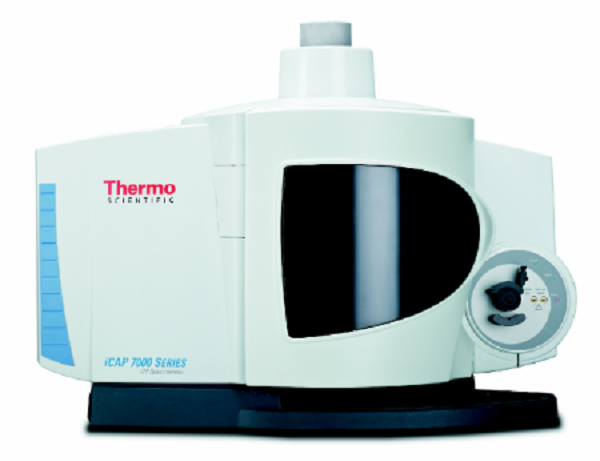
Inductively Coupled Plasma – Optical Emission Spectrometer (ICP-OES)
GCRG’s iCAP 7200 ICP-OES (Thermo Fisher Scientific) Analyzer has a dedicated radial view to handle more robust samples. The instrument is capable of handling organic matrices due to a baffled cyclonic spray chamber and quartz V-groove nebulizer. The instrument also boasts a HF resistant sample introduction kit with a ceramic center tube, sapphire nebulizer, and HF resistant spray chamber; allowing for the digestion of silica-based samples. These two setups enable the qualification and quantification of most elements in both oil and aqueous matrices with detection limits at the 0.1-10 ppm level, depending on the matrix and element in question.
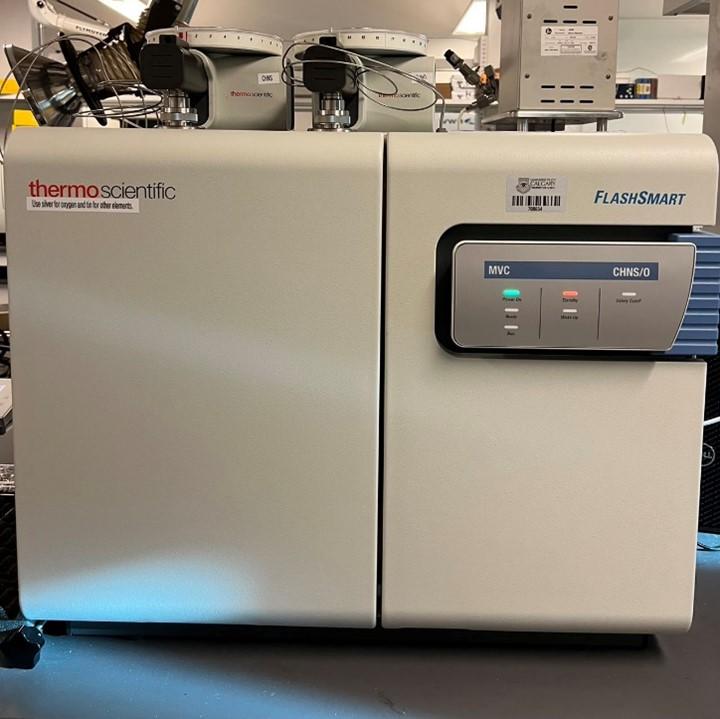
FlashSmart Elemental Analyzer
- Two separated reactors are designed and fabricated into this instrument to measure the CHNS and O content, respectively.
- Two independent furnaces with maximum temperature of 1100oC.
- The dynamic flash combustion technique is used to determine CHNS content.
- The pyrolysis mode is used to determine the O content.
- Both liquid and solid samples (around 2 mg) can be directly injected into the instrument without complicated sample preparation.
- Built-in helium and oxygen pressure reducers and gauges preventing air diffusion into the pneumatic circuit.
- Automated programmable wake up, start up and shut off functions enhancing the independent operation of the Analyzer and minimizing running cost.
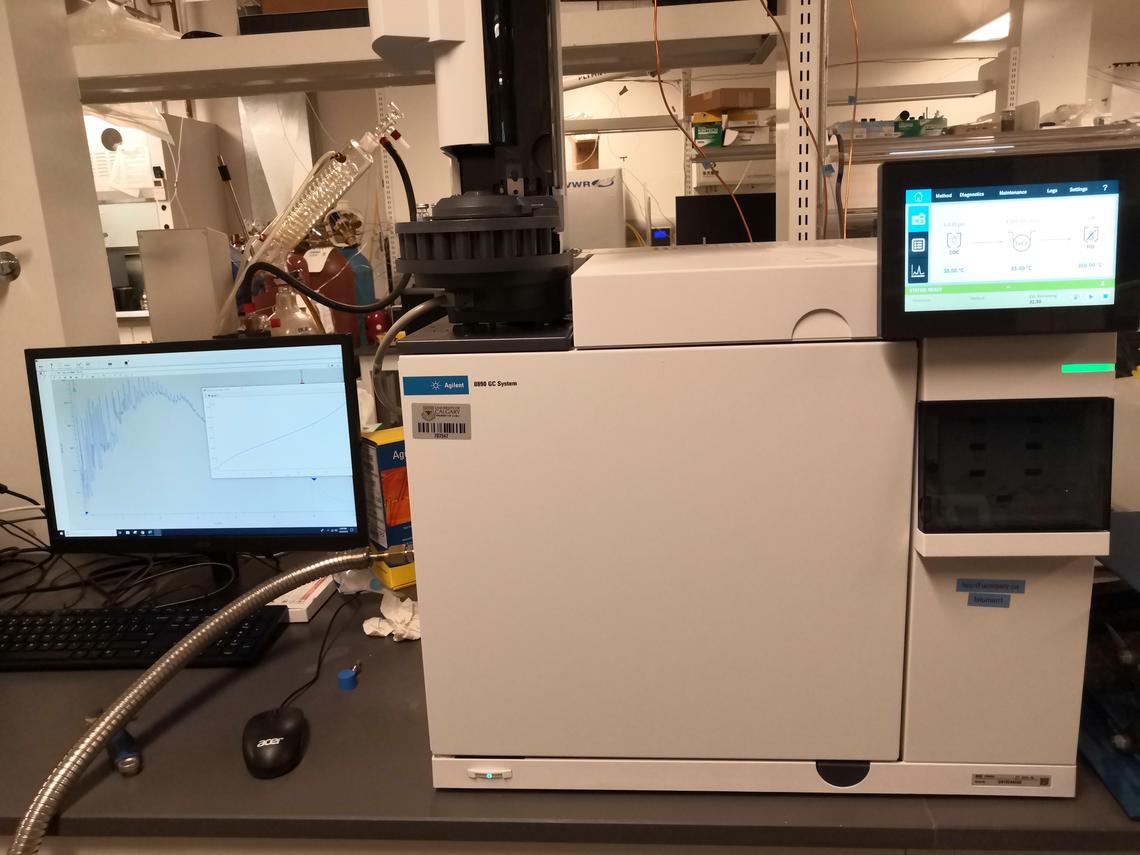
Simulated Distillation Analyzer
- The fully automated simulated distillation analyzer (Agilent GC 8890) is used to determine the boiling point distribution of crude oils and other oil samples via simulated distillation using gas chromatography (GC)
- The tests are based on the ASTM D7169-11
- The results are given as a boiling point distribution curve as well as the recovery and average molecular weight of the sample
- This method is applicable for a carbon range of C9 to C100

Simultaneous thermal analyzer (PerkinElmer STA 6000)
- Simultaneously determines sample mass change (TG) and heat flow change in DTA (delta T) mode or DSC mode (mW)
- Temperature accuracy < ± 0.5%; temperature reproducibility < ± 0.5%
- Calorimetric data: accuracy/precision, ± 2% (based on metal standards)
- Balance resolution: 0.1 ug
- Balance measurement range: 1500 mg
- Temperature range: 15 - 1000 degree C
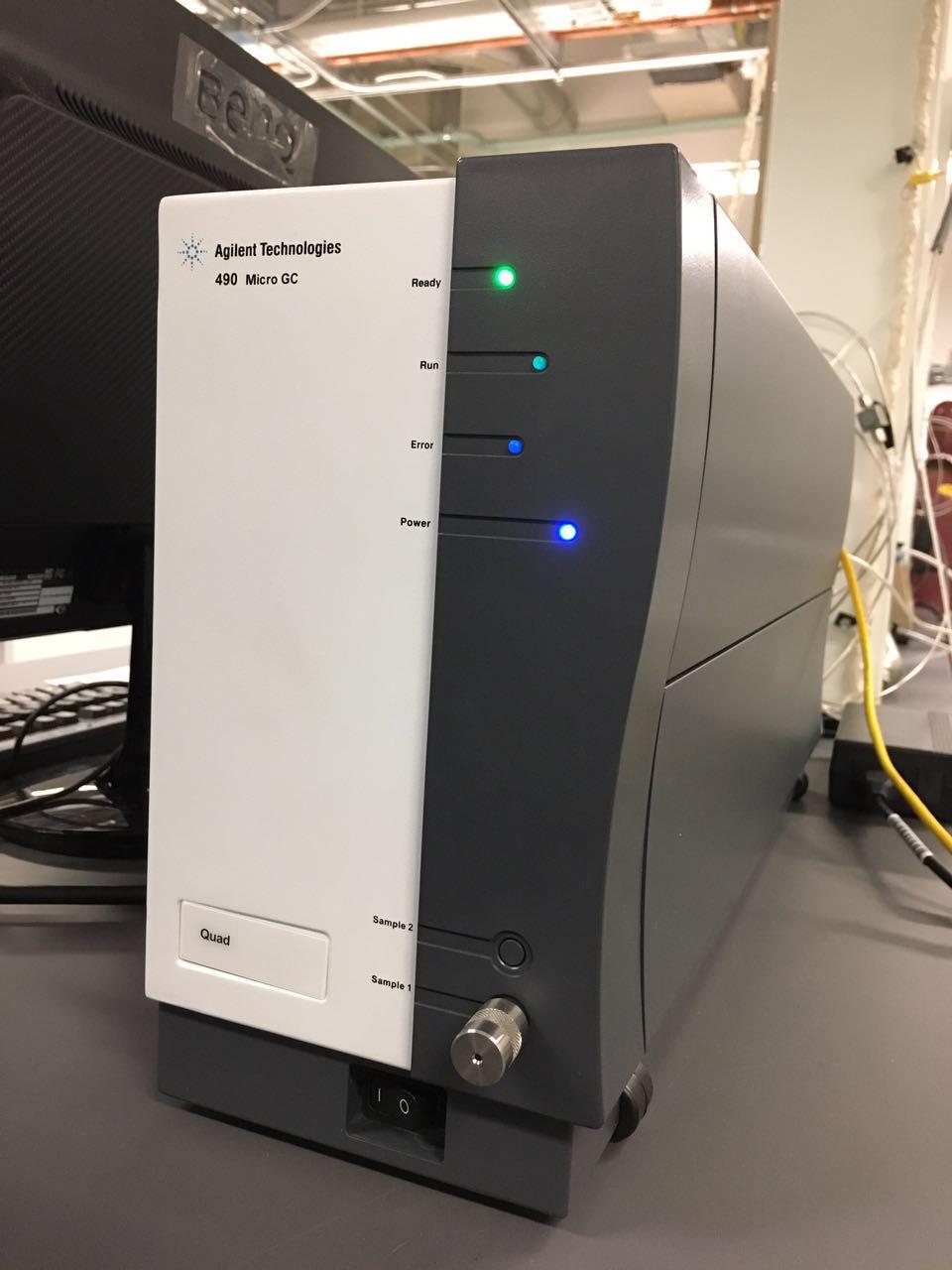
Agilent 490 Micro-GC
- 4-Channel configuration powerful for C1 - C6 hydrocarbon analysis
- OpenLAB CDS ChemStation capable of GC data acquisition and analysis
- Micro-machined thermal conductivity detector capable of analyzing gas sample with concentration from 1 ppm to 100% level
- Sample pressure detection and adjustment for GC protection
- Independent control of each analytical channel
- Temperature range up to 180 oC
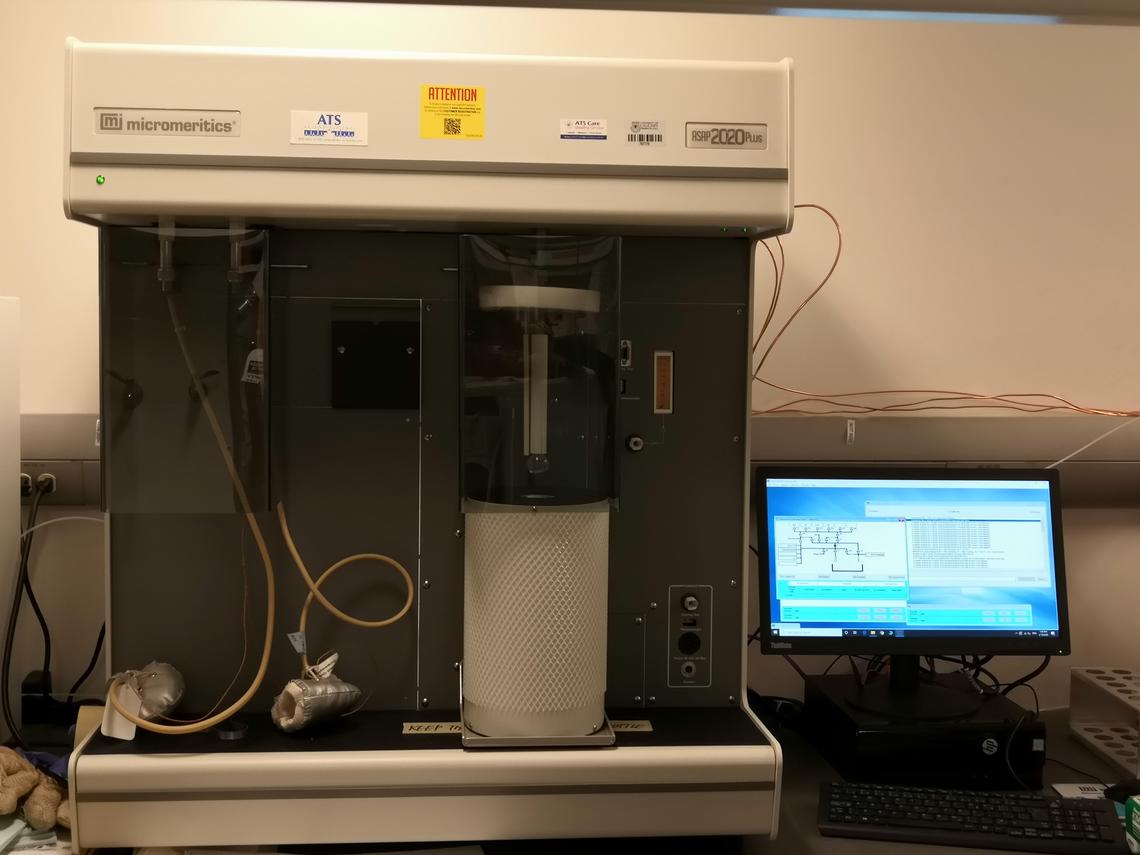
Surface Area and Porosimeter System (Micometrics ASAP2020 Plus)
- Programmable two-station degas system for automated SOP sample preparation
- A dedicated P° sensor allows for faster analysis and provides P° values at the same conditions as the adsorption measurement.
- Six analysis gas inlets with dedicated vapor and helium free-space ports provide greater flexibility and automated selection of pretreatment, backfill, and analysis gases.
- Proven Isothermal Jacket Cold Zone Control provides accurate, reproducible temperature maintenance.
- Long duration and refillable dewar provide virtually unlimited time-of-analysis capability.
- Standard, independent dual vacuum systems (one for analysis, one for sample pretreatment). Also available is an optional, oil-free system.
- The proprietary transducer system provides unequaled stability, fast response, and low hysteresis for improved accuracy and signal to noise improvement.
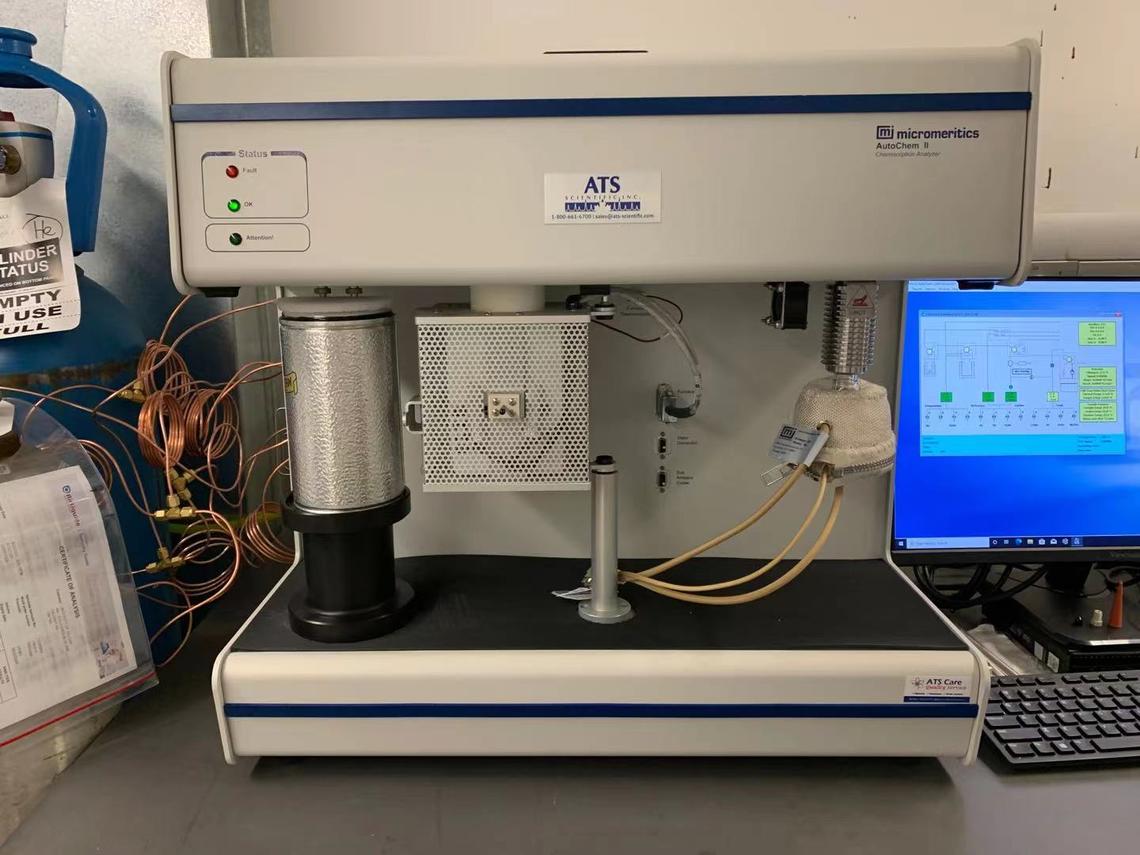
Chemisorption System (Micromeritics AutoChem II 2920)
- Investigating the reduction, oxidation, desorption of solid samples as a function of temperature.
- Characterizing the metal dispersion of catalyst sample by pulse-chemisorption experiment
- Single-Point BET Analysis
- Organic vapor can be used as the probe with equipped high precision vapor generator
- Temperature range: ambient to 1100 ℃
- Active gas: H2, CO, O2, NH3
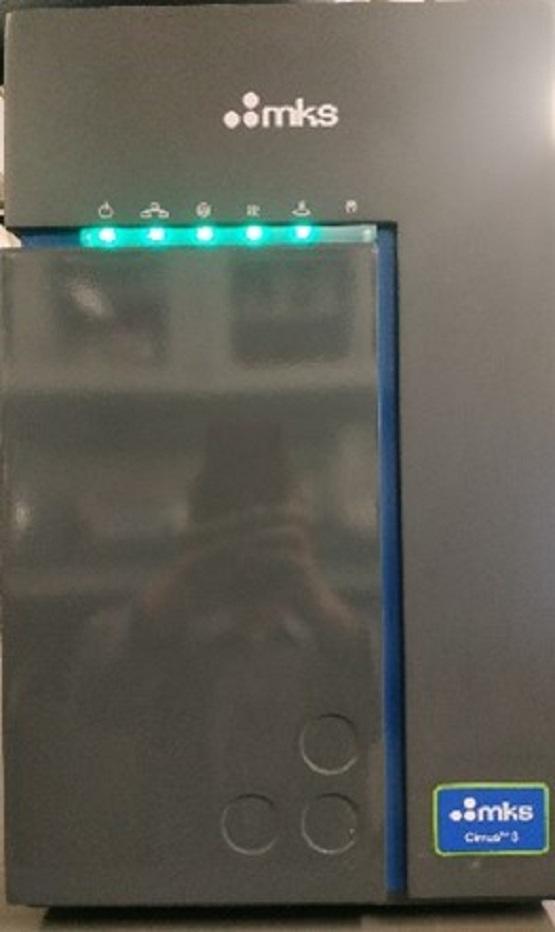
Residual Gas Analyzer (MKS, Cirrus-3)
- Precision-built Quadrupole Analyzer
- Radiant Heated Oven
- Internal Dry Vacuum Pumps
- Integrated Pressure Gauge
- Pressure and Thermal Trip for Filament and Analyzer Protection
- 24 Volt Operation

UV-Vis Spectrophotometer (GENYSYS 150)
The GENESYS 150 UV-Vis Spectrophotometer provides automation for high-throughput options and room-light resistance, allowing lid-open operation for improved speed and convenience. A full line of accessories, including automated cell changers and cell holders, sipper, and fiber optic probes are designed to simplify sampling and accommodate high throughput measurements and temperature control. Features data resolution from 0.2 nm to 5 nm.

Fully Automated Chemisorption Analyzer (3010C)
- Temperature Programmed Desorption (TPD)
- Temperature Programmed Reduction (TPR)
- Temperature Programmed Oxidation (TPO)
- Temperature Programmed Surface Reaction (TPSR)
- Single-Point BET Analysis
- Metal Dispersion Measurement
- Pulse Chemisorption
- Temperature range: room temperature ~ 1100 C
- Pressure tolerance: 0.1 ~ 10 MPa
- Sample loading: 10 ~ 500 mg
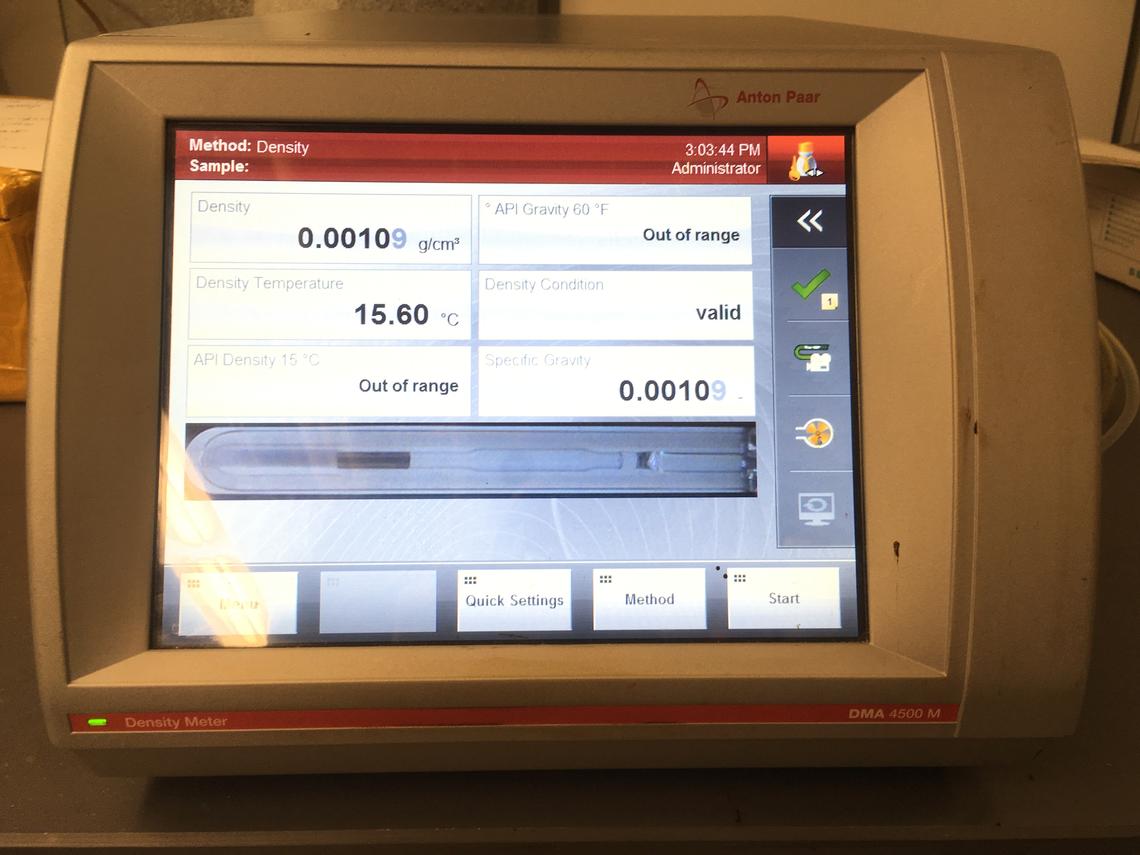
Density meter (Anton Paar DMA 4500 M)
- Capable of density measurement for liquid samples such as heavy oil, gasoline, diesel, aqueous solutions, and colloid samples between 0 - 100 oC
- This density meter can provide reliable and accurate 5-digit density value
- The stable density results based on comprehensive knowledge of the oscillation characteristics
- This method results in viscosity correction, which is twice as effective as anything else available on the market
- The automatic bubble detection system gives you back control of your filling
- The different filling approaches, humidity, air pressure, all these have no effect on the operation and results

Total acid numbers (TAN) / Bromine Number titrator (Metrohm 848 Titrino Plus)
-
Cylinder volume resolution: 1/10,000
-
802 Stirrer (propeller stirrer)
-
Exchange unit with an integrated data chip
-
Calibration of pH electrodes (5 points)
-
Endpoint titration at one or two specified endpoint
-
Monotonic equivalence point titration
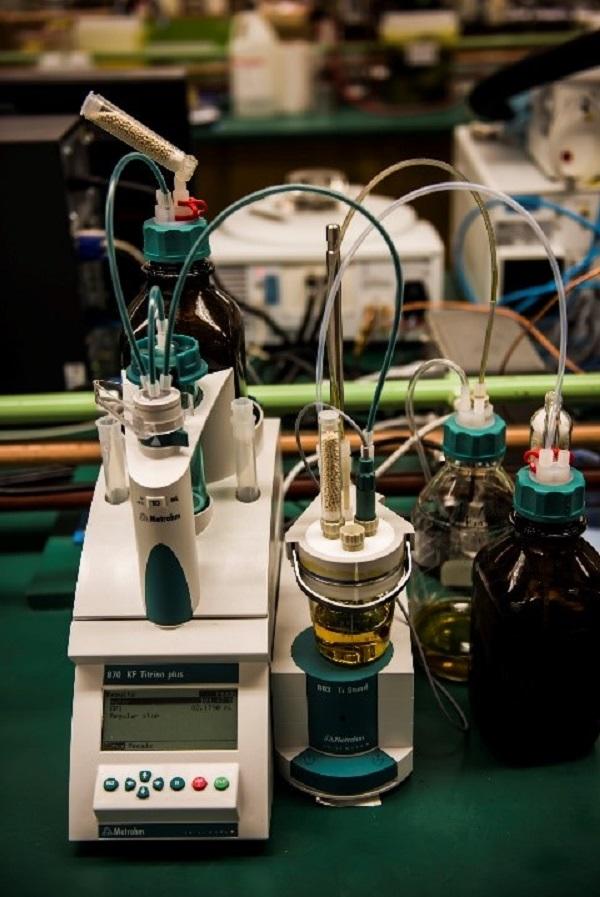
Volumetric Karl Fischer titrator (Metrohm 870 Titrino plus)
-
Measure water content from a few ppm up to 100% reliably and accurately in solid, liquid and gaseous samples
-
Cylinder volume resolution: 1/10,000
-
801 Magnetic stirrer with base plate
-
Exchange unit with integrated data chip
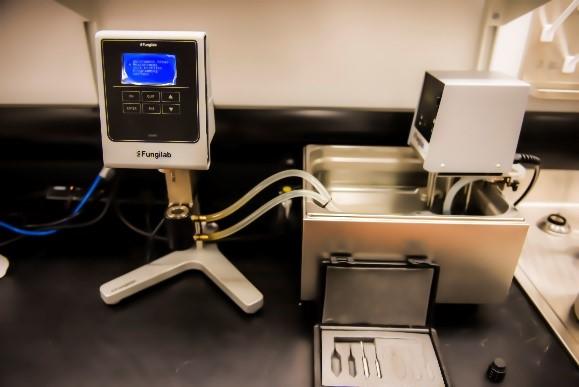
Viscometer (Fungilab)
- Measuring range: 20 - 2,000,000 cP
- AISI 316 stainless steel spindles
- Precision: ± 1% of full scale; repeatability: 0.2%
- Temperature margins: 0-100 degree C; resolution: ±0.1 degree C; type of probe: Pt100
- Equipped with a hot water batch and chiller with a temperature range of -20 oC to 80 oC

Gas displacement density analyzer (Micromeritics AccuPyc II 1340)
- High-speed, high-precision volume measurements and density calculations on a wide variety of powders, solids, and slurries shaving volumes from 0.01 to 10 cm3
- The density calculation is using gas displacement method, which is more accurate and reproducible compared to the traditional Archimedes water displacement method.
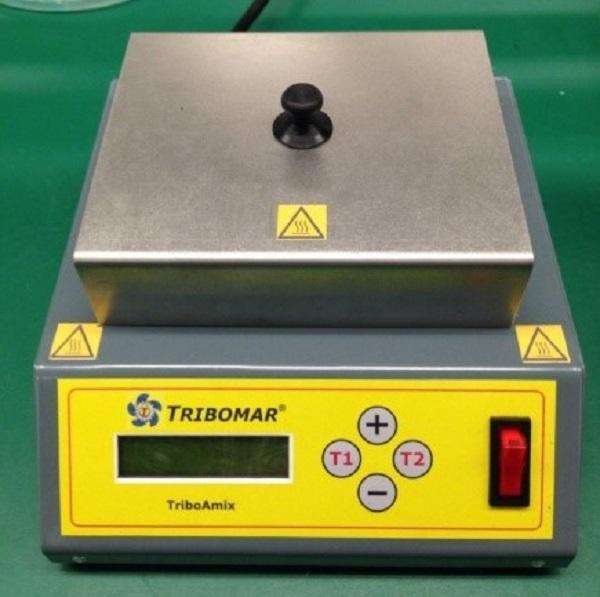
Fuel compatibility & stability test (TriboAmix)
- Testing the compatibility of different fuels
- Testing the stability of fuels
- Oven to dry spot test paper
- Temperature range from ambient to 98 degree C
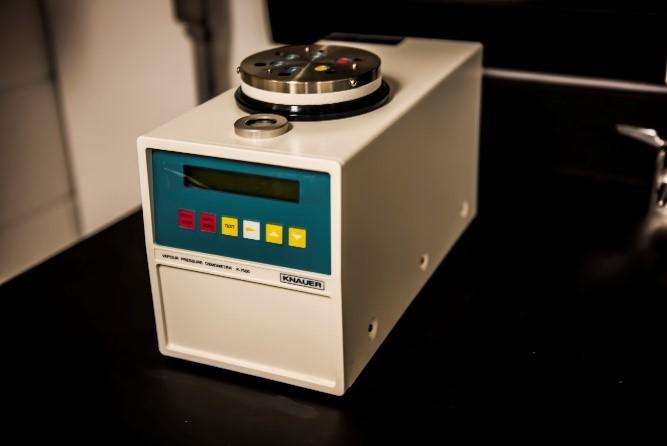
Vapor pressure osmometer (Knauer GmbH)
- Determining molecular weight of polymers in aqueous or organic solvents;
- Molecular range: aqueous, up to 10,000g/mol; organic, 40 - 40,000g/mol;
- Sensitivity: 3.3x10-5mol/kg in toluene and 1.7x10-4mol/kg in H2O

Extraction and distillation system
-
The extraction system can separate the toluene-insoluble solid and measure the coke rate of a petroleum reaction
-
Distillation system can distill the gasoline and diesel fraction in the petroleum product
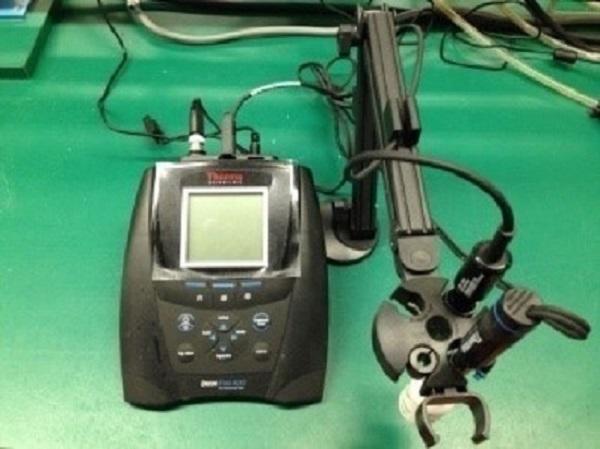
pH/conductivity meter (Orin Star A215)
- Accuracy: 0.5% of reading for conductivity and ±0.002 pH for pH measurement
- Range: 0.001 µS/cm to 3000 mS/cm for conductivity and -2.000 to 20.000 pH for pH measurement
- Resolution: 0.001 µS for conductivity and 0.001pH for pH measurement
- Temperature measurement: ±0.1°C accuracy, -5 to +105°C range, and 0.1°C resolution
- Calibration points: up to 5
We are granted free access to the following major analytical instruments through collaboration:
- X-Ray Absorption Spectroscopy (XAS) with in-situ feature
- High Resolution Transmission Electron Microscopy (HRTEM) with in-situ feature
- X-ray Photoelectron Spectroscopy (XPS) with in-situ feature
- X-Ray Photoelectron Spectroscopy (XPS) with in-situ feature
- Atomic Force Spectorscopy (AFM)
- Solid-State NMR
- Time-of-Flight Secondary Ion Mass Spectrometry (TOF-SIMS)
- ICP-OES
- XRD with in-situ feature
- Total organic carbon analyzer

